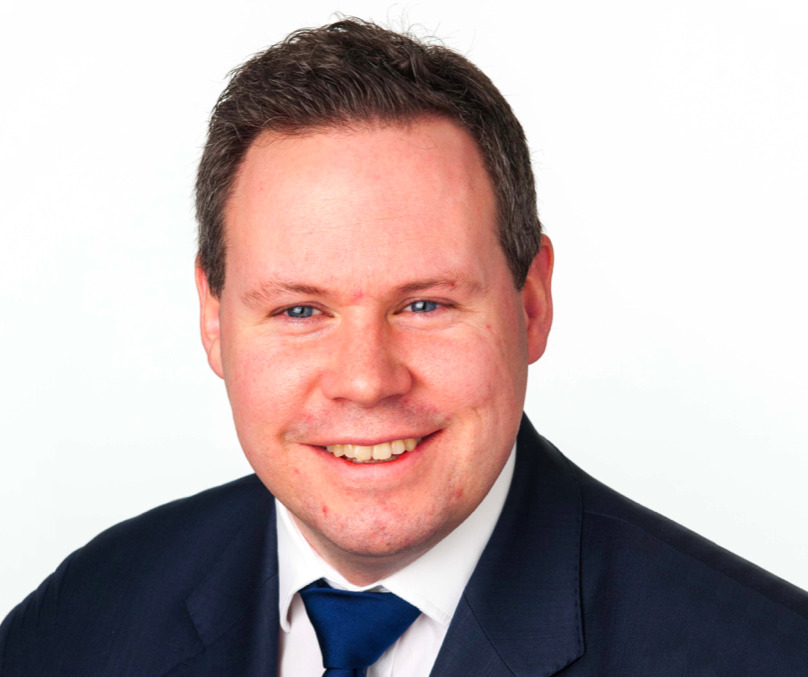By Hamlin Lovell, NordicInvestor
NordicInvestor interviewed Martin Axell, Senior Portfolio Manager at Länsförsäkringar, who manages 25 billion SEK in the firm’s asset management and life insurance businesses. This is spread across 7 multi-asset funds with different risk targets. The percentage managed through internal managers is 36% and external 64%.
Before returning to Sweden in 2014, Axell spent six years in London, working for the UK’s largest corporate pension scheme, BT Pension Scheme Management, as well as Morgan Stanley and UK insurance companies Amlin and Legal & General. He says, “it is the same job whether you are in London or Stockholm. Stockholm offers a more relaxed work environment and Sweden is more open minded about new asset classes than are some of the more conservative UK funds”.
His big picture philosophy is to take a two year view on asset allocation, rely on diversification to reduce risk but not returns, and let the managers do the security selection – at least outside Sweden.
“The in-house allocations are mainly to local markets – Swedish fixed income, large cap and small cap equities, where the team has a skill set and edge matching external peers. Additionally, one of the seven multi asset funds is a kind of hedge fund following an unconstrained, global macro asset allocation approach including global equities, credit, inflation linked, catastrophe bonds and a currency derivative overlay”, says Axell. The other six multi-asset funds are long only.
Developed Market Equities
Passive equity index products are used to express short term asset allocation views, but most of the exposure is in active managers.
There are four active global equity managers, and Axell takes a view on styles: there is currently a bias to the growth and quality styles with two growth/quality managers, one value manager, and one core manager. Some of the managers are taking a quantitative approach, which could in some cases be seen as a kind of “smart beta” fundamental or ESG overlay. Axell is also carrying out further research into factor investing.
The managers are benchmarked against MSCI World. “Individually they are expected to have a high tracking error, but collectively the tracking error is lower due to the diversification benefit amongst the different styles”, explains Axell.
Recently, Länsförsäkringar has taken a tactical position in European small caps, which Axell believes are geared to a recovery from recession.
Emerging Market Equities
“Around 10% of the equities allocation is in emerging market equities. This may seem small but it matches the MSCI World weighting”, says Axell. “There is only one active external manager, but this is in fact a multi-manager in itself with many different managers pursuing different styles”, he adds. The EM manager can deploy risk in frontier markets, but there is not much exposure there. Axell is concerned about illiquidity risk and capacity constraints in frontier markets.
Government Debt and Inflation Linked Debt
Government bonds, inflation linked bonds, and covered bonds are managed internally. The only one of the three that Axell currently finds attractive is inflation linked debt: “linkers could do very well versus nominal bonds. Break evens in the Swedish market have come down to some 1% from 2% in 2018. Similarly, US and European break even levels have traded down, as they always do during periods of financial stress”.
The firm is hugely underweight of nominal (non-inflation linked) government bonds: “to get a good return on bonds with negative yields, the yield would need to go more negative. On a two year view, government bond yields will go up. The asset class is very unattractive”.
Corporate Debt
“We are heavily overweight of investment grade corporate debt, where there are very attractive spreads compared with the very low default risk faced”. As of June 2020, there are three external managers running investment grade credit, diversified by style as well as one manager running US high yield bonds.
Corporate bonds are managed externally, with an average split of 90% investment grade and 10% high yield. There is no exposure to Swedish corporate debt, where Axell is concerned about liquidity, and prefers to be diversified across hundreds of more liquid names in a portfolio of global corporate bonds.
Daily dealing on the funds leaves no budget for illiquid strategies such as private debt, though there is a small weighting in senior secured leveraged loans, which Axell believes offer some illiquidity premium after the selloff. One manager is used for both European and US loans.
Incidentally, Axell does believe that structured credit and distressed debt could offer interesting opportunities for those investors, such as some pension funds, who can lock up money for a multi-year period: “there is more value in stressed names with a B or CCC rating. Industries such as commercial real estate or airlines could offer good opportunities for multi-year restructuring”.
Emerging Market Debt
“In emerging market debt, the allocation is mainly to sovereign debt, and is split roughly 50/50 between hard currency and local currency. There are three managers to diversify with different levels of beta, tracking error, and approaches to alpha generation. As with corporate credit, the top down asset allocation decision is made in house, and external managers are responsible for security selection, mainly taking views on sovereigns and currencies (they can also take off benchmark bets on corporates)”, says Axell.
The World Bank has suggested that many developing countries may need debt restructuring or relief. Axell judges that, “default risk is priced into the market, which is why these countries trade at higher spreads. Active managers who have a 10-20 year track record can pick the right countries. Restructuring of debt is normal in the EM space”.
He expects that the sharp recovery seen in May could continue: “as Corona gets under control and the oil price volatility stabilises, EM countries will get back to normality. Given very little value in developed market government debt, investors will search for yield. And on a two year view some currencies could also appreciate, adding further returns to the allocation”.
Insurance linked and catastrophe bonds
There is one asset manager for CAT bonds, which Axell categorises as a low risk part of the market: “we can get a 3% return with 3% volatility, no interest rate risk, and no correlation to equities or inflation”.
There are fears that global warming increases the frequency of extreme weather events such as hurricanes and forest fires. But Axell reckons that “climate change risks are priced in after spreads widened out in 2018 and 2019”.
Vehicles and fees
Länsförsäkringar allocates through both funds and segregated accounts. “For our smaller allocations we tend to use funds and for larger managers we are more likely to use segregated accounts”, says Axell.
“We always negotiate on fees and given the size of our allocations as well as our long term holding periods we achieve competitive prices. We are happy to pay fees for alpha, but not for zero alpha. We expect management fees could continue to come down in general. Equally if managers are running less scalable strategies and are disciplined on capacity, they can charge higher fees. Our long only managers do not charge performance fees”.



